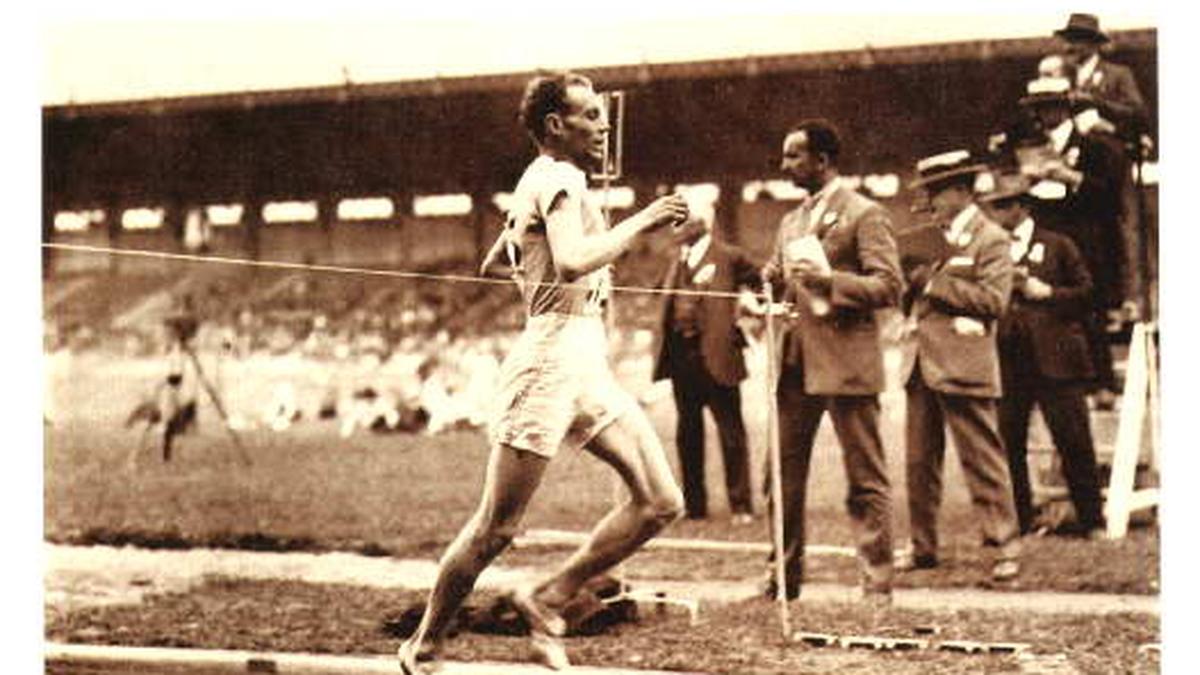Olympics special: Legends of the Games
Paavo Nurmi
Finland’s mastery of 1,500m, the 5,000m, the 10,000m, the cross-country races (which were then part of the competition schedule) and the 3,000m steeplechase, which continued until Moscow 1980, was cemented by the great Paavo Nurmi.
After the 1916 Olympics was cancelled due to World War 1, Nurmi was successful in winning the 10,000m and the individual and team cross-country gold medals after a silver in the 5,000m at Antwerp in 1920. At Paris 1924, Nurmi won five gold medals in six days, with those in the 1,500m and 5,000m coming within an hour of each other. He subsequently won the cross-country (both individual and team) and 3,000m team races, but the Finnish authorities would not allow him to take part in any further events, though Nurmi did make several pleas that he be allowed to run the 10,000m.
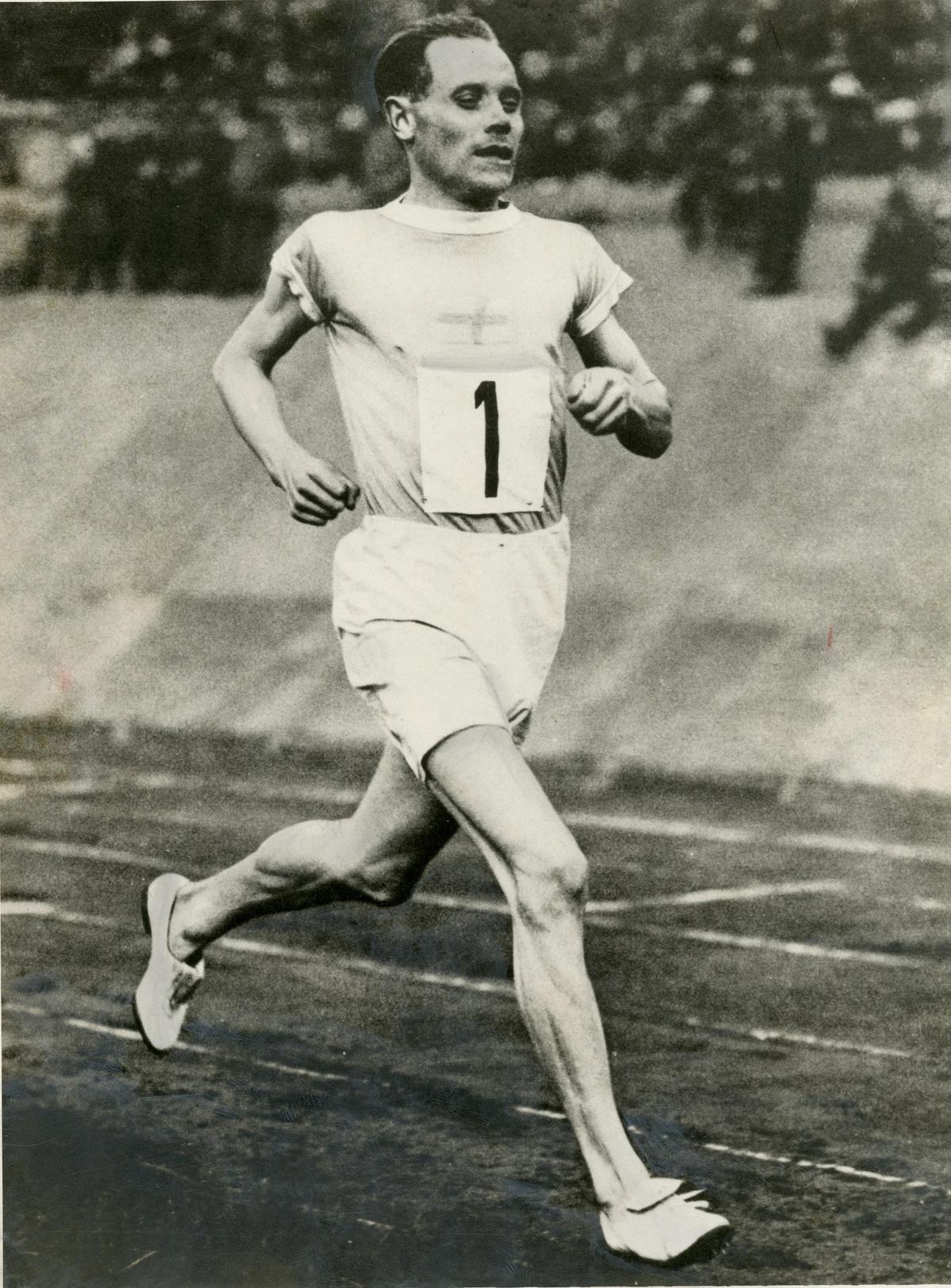
Paavo Nurmi.
| Photo Credit:
The Hindu Photo Library
Paavo Nurmi.
| Photo Credit:
The Hindu Photo Library
An angered Nurmi ran the distance on another track outside the Olympic venue, clocking a much better time than the official winner. At Amsterdam 1928, Nurmi took the 10,000m gold while finishing second in the 5,000m and the 3,000m. Nurmi wanted to win a 10th Olympic gold medal and continued training to take part in the marathon in Los Angeles in 1932.
However, just before the Games, he was banned by the International Amateur Athletics Federation based on a complaint filed by the Swedish federation, citing that he was no longer an amateur. However, Nurmi was given the honour of lighting the Games Flame in Helsinki in 1952.
Haile Gebrselassie
Haile Gebrselassie had a late kick that he employed in races, coming from nowhere to win. Geb, as he came to be called affectionately, was a master craftsman in long-distance running, finishing his career with two Olympic gold medals, four World Championships titles, and 26 world records in the 10,000m. A 20km run to school—10 km either way carrying books—shaped the ace athlete.
Gebrselassie marked his arrival at the 1992 Seoul World Juniors with a hurried finish and gained a double with wins in the 5,000m and 10,000m, the latter coming in true Geb style. He trailed Josephat Machuka for most of the race until he shifted gears and overtook the Kenyan, who had thought he had the title in his kitty. As the Ethiopian came from behind, Machuka was so enraged that he threw a fist at the overtaking Geb, inviting his disqualification.
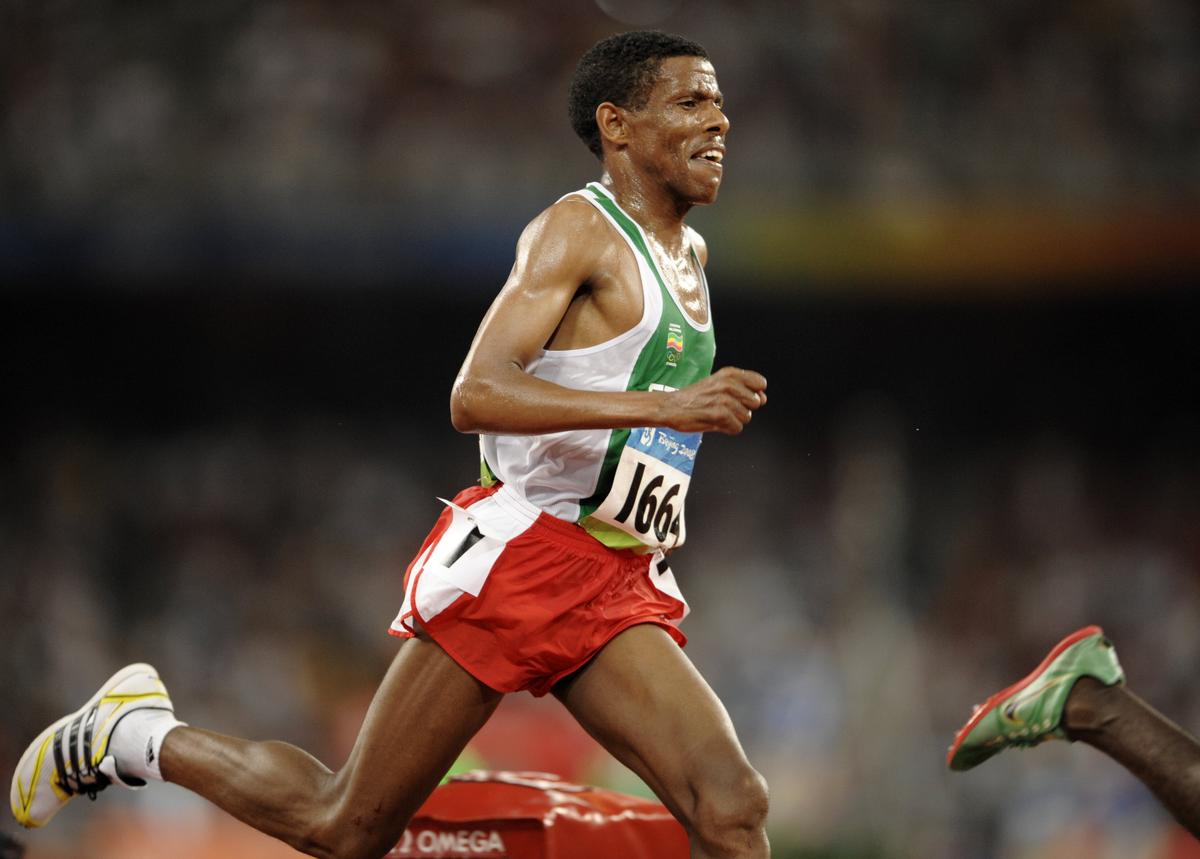
Haile Gebrselassie.
| Photo Credit:
AFP
Haile Gebrselassie.
| Photo Credit:
AFP
As his career blossomed, Gebrselassie used to train 13 times a week, taking off from his gruelling schedules only on Sunday afternoons, averaging anything between 110km and 190km. While he would be trotting out each kilometre at a leisurely pace of six minutes and 15 seconds during the off-season, it would peak up to 4:48 as competitions approached.
His training at a high-altitude camp, set at more than 8,000 feet above sea level, only helped Geb measure up to his standards when he competed at sea level. Geb’s bow at the Atlanta Olympics in 1996 also marked a great rivalry with Kenya’s Paul Tergat, with the Ethiopian getting to the lead with only a mere 6m left for the finish. At Sydney 2000, as the two men engaged in a fierce battle, Geb confirmed his back-to-back titles quite sensationally on only his last stride.
Steve Redgrave
Winning a medal at the Olympics is the dream of any athlete. But to sustain that interest over 20 years is not something most are capable of. Steve Redgrave defied age and diabetes to place himself at the top of the pantheon of Olympic champions with a fifth straight one.
Starting with Los Angeles 1984 through to Sydney 2000, he rowed his way to glory, his final win coming after he had announced his retirement following his fourth gold: “If anyone sees me going anywhere near a boat again, they have my permission to shoot me!”
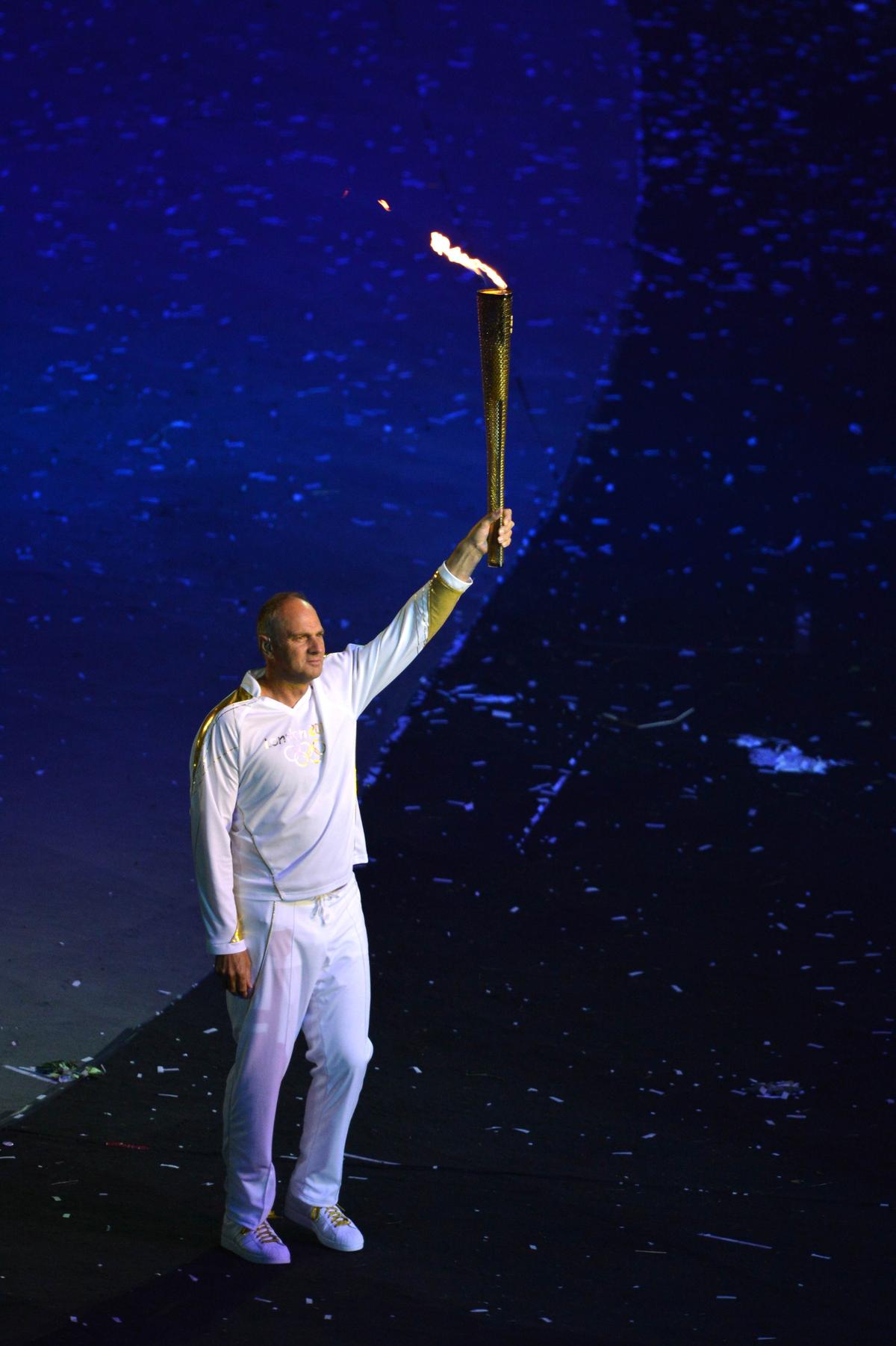
Steve Redgrave.
| Photo Credit:
AFP
Steve Redgrave.
| Photo Credit:
AFP
The Briton’s tryst with Olympic stardom got off to a start in Los Angeles as part of the winning coxed fours before getting to Seoul 1988, where Redgrave, in the company of Andy Holmes, took gold in the coxless pairs and bronze in the coxed pairs.
By the time he got to Barcelona in 1992, Redgrave knew very well when to dominate the rival crews and when to hold back. This helped him and his new partner, Matthew Pinset, take pole position and repeat the feat at Atlanta 1996, where Redgrave was the British flagbearer as well. In Sydney, he was seen in action in the coxed fours, which Britain won, giving Redgrave his fifth consecutive gold medal.
Zhang Yining
China has produced several outstanding table tennis players who have dazzled with a superior craft that other nations have been unable to match. One such player was Zhang Yining, the two-time Olympic champion who held the No. 1 ranking for over six years between 2003 and 2009, with a break of only two months in between in 2008.
Born in Beijing in 1981, Zhang came through the well-established Chinese system, making her debut with the national team at the 1999 World Championships and ending with silver. She was to again lose in the Worlds final two years later but was rarely defeated after that.
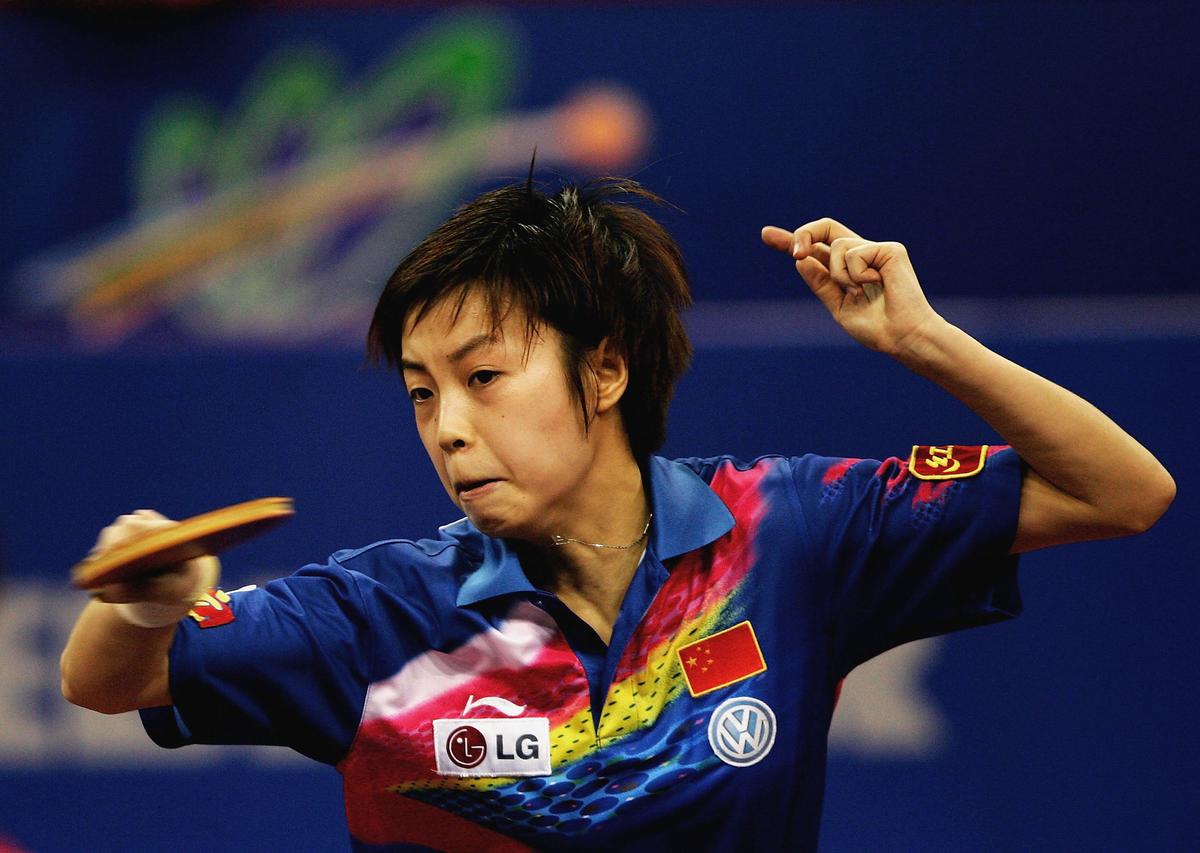
Zhang Yining.
| Photo Credit:
Getty Images
Zhang Yining.
| Photo Credit:
Getty Images
Zhang ended her career with four Olympic and 10 World Championships gold medals, besides four World Cup wins. Like other formidable Chinese players, Zhang displayed the same ruthlessness both on the table and away. Her proficient skills and speed were a sight to behold as she mercilessly downed her opponents, delivering topspin forehands with consistency.
But what earned this player with the shakehand grip the moniker “Yellow Beast” was how she waylaid her rivals with her backhand. She could lay down a blizzard on the other end of the table, providing opponents with little chance to retrieve or forcing them to commit unforced errors.
Kristin Otto
Never before had a female athlete won more than four gold medals at a single Games. At Seoul 1988, Otto took part in six events and won all of them with the utmost ease. Born in Leipzig, Otto was drafted into a specialised sports school when she was around 11 and made steady strides before becoming part of the East German world record-breaking quartet in the 400m medley relay at the 1982 world championships.
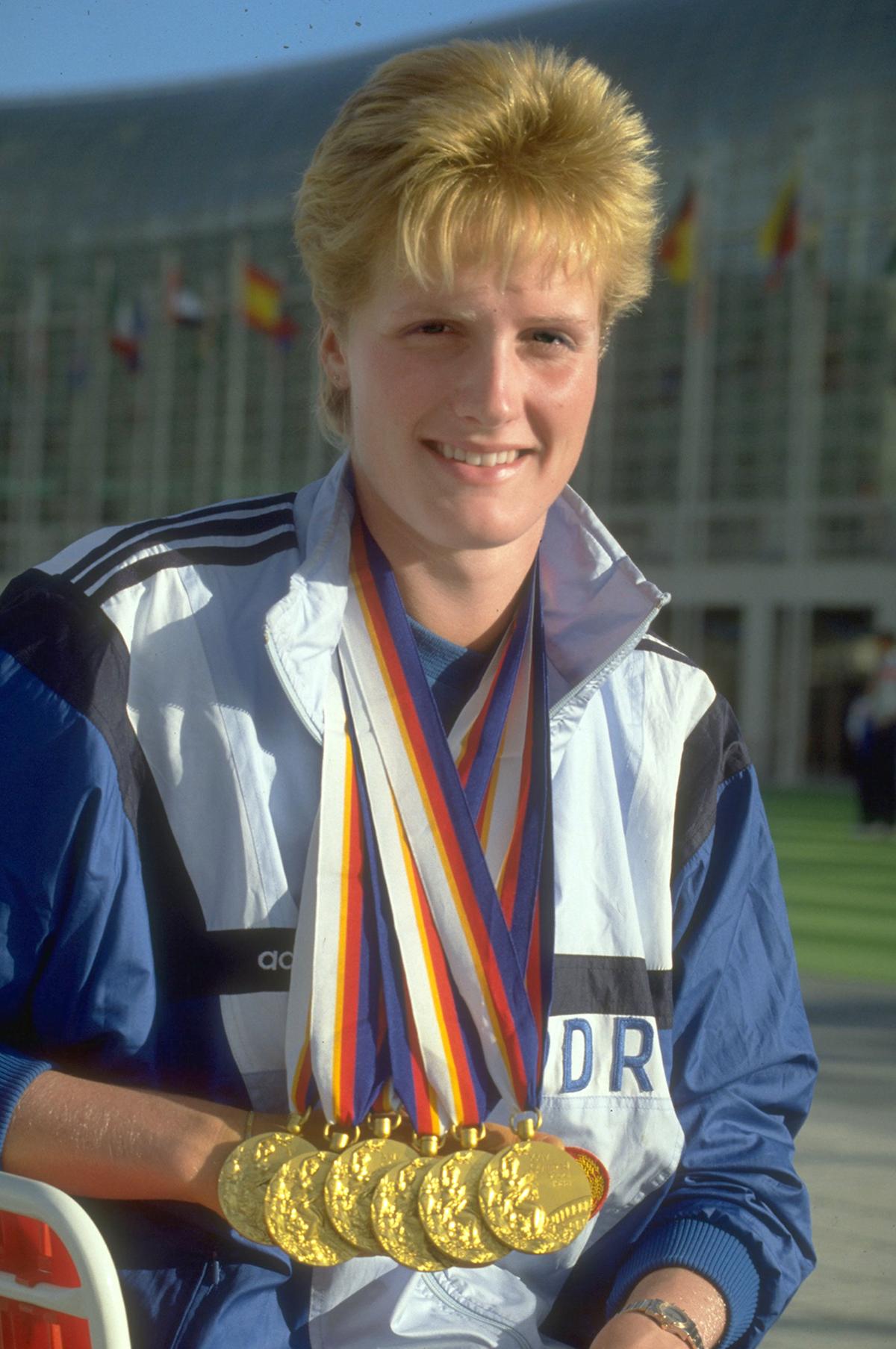
Kristin Otto.
| Photo Credit:
Getty Images
Kristin Otto.
| Photo Credit:
Getty Images
Two years later, she was supposed to make it big in Los Angeles before the boycott of the Games by the East European bloc countries spoiled her intended party. Later that year, as ill-luck would have it, she injured a vertebra, which forced her to remain in a neck brace for the next nine months. The medical team attending her insisted that Otto give up swimming, but she would have none of it and was back in the pool soon after.
At the 1986 worlds, Otto’s steely determination brought her four golds in a bag of six. The European Championships next year saw an encore with five gold medals, after she opted out of the 50m freestyle. In Seoul, she tasted success in three different categories, competing in the 50m, the 100m freestyle, the 100m backstroke and the 100m butterfly, beside the two relays, to seal one of the most historic achievements of the Games.
Mark Spitz
Standing tall at 6 feet, 1 inch with a heavy build and a handsome face with a dripping moustache, Spitz was the quintessential macho man of the 1970s. But his claim to fame was as a stealth bomber in the pool. Munich 1972 was blemished by the Palestinian attack on the Israeli delegation and would have been buried but for the single-handed effort of Spitz, who won the maximum number of gold medals in a single Games until then – seven, each with a world record to boot — a record that would stand for 36 years.
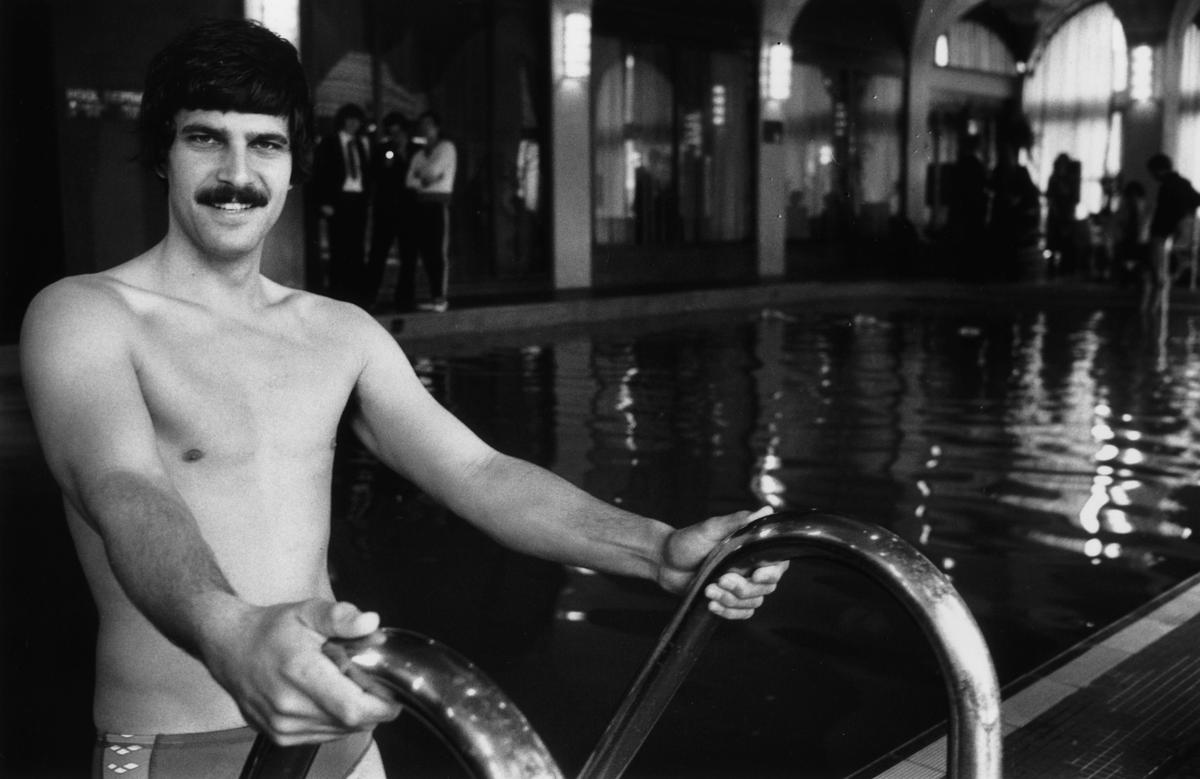
Mark Spitz.
| Photo Credit:
Getty Images
Mark Spitz.
| Photo Credit:
Getty Images
At just two, Spitz was taught the basics of swimming by his father, who followed just one mantra — ‘swimming isn’t everything, winning is’. The early start gave Spitz an advantage, and he went on to clinch as many as 17 national age-group records when he was only 10. At 16, he gained the first of his 24 national Amateur Athletic Union titles, and with several records under his belt, Spitz was already seen as a prospective Olympic champion.
All eyes were on Spitz at Mexico in 1968, but the 18-year-old could only win two golds, both in relays, besides an individual silver and a bronze. Spitz vowed he would return, which he did four years later with his superlative seven, with wins in the 100m and 200m freestyle, the butterfly events, the three relays, and the 400m and 800m freestyle and the 400m medley.
Cathy Freeman
As she entered the Olympic stadium midway through the opening ceremony of Sydney 2000, the message was loud and clear. Cathy Freeman, an Aboriginal, was given pride of place in Australia’s biggest sporting moment in the new millennium. Born in 1973, Freeman was more of a 100m runner at the junior level and only transitioned to the one-lap race as a senior.
After failing to make an impression at Barcelona 1992 at the age of 19, she scribbled “48.60, Atlanta” on the back of an airsickness bag on the return flight home. Four years later, she did just that, clocking 48.63s as she took silver behind Frenchwoman Marie-Jose Perec after being engaged in a neck-to-neck battle until the very last.
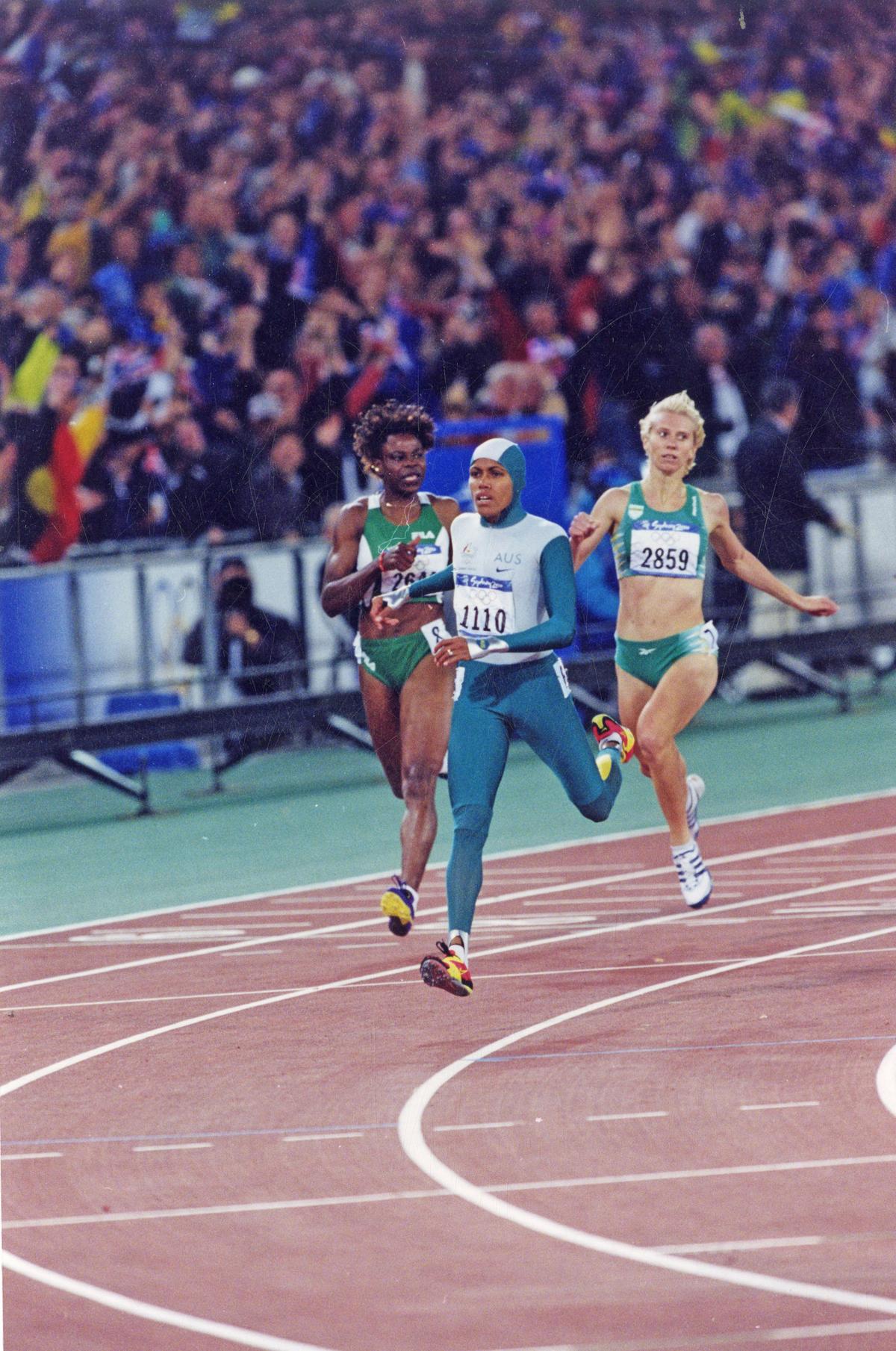
Cathy Freeman.
| Photo Credit:
The Hindu Photo Library
Cathy Freeman.
| Photo Credit:
The Hindu Photo Library
On her victory lap, Freeman carried both the Australian flag and the Aboriginal national pendent, which was strictly against Olympic rules. But even the often-stern International Olympic Committee seemed pleased to look the other way, in quiet admiration of the valiant effort of this young Australian. Four years later in Sydney, Freeman became her country’s second athlete to win the 400m gold, which turned out to be Australia’s all-time 100th at the Summer Games.
Nadia Comaneci
The world was quite unprepared for the arrival of Nadia Comaneci at the Olympic stage. What could a man-made scoreboard do under such circumstances but blink? Montreal Olympics 1976 will always be known for this faux pas as well as the perfect 10 turned in by the 14-year-old Romanian gymnast in the team part of the competition for the first time. In a sport where places are determined by fractions, none had thought the scoreboard would be required to display four digits to show a 10.00, and in the end what Comaneci saw as she came off her dismount was 1.00.
The official announcement brought an end to the drama as it was made known that Comaneci had achieved perfection. Once she had proved it to be achievable, she couldn’t stop doing it again and again. The Romanian, in fact, carded six 10s during the Games on the way to three gold medals (all-around, beam and uneven bars), a silver (team) and a bronze (floor).
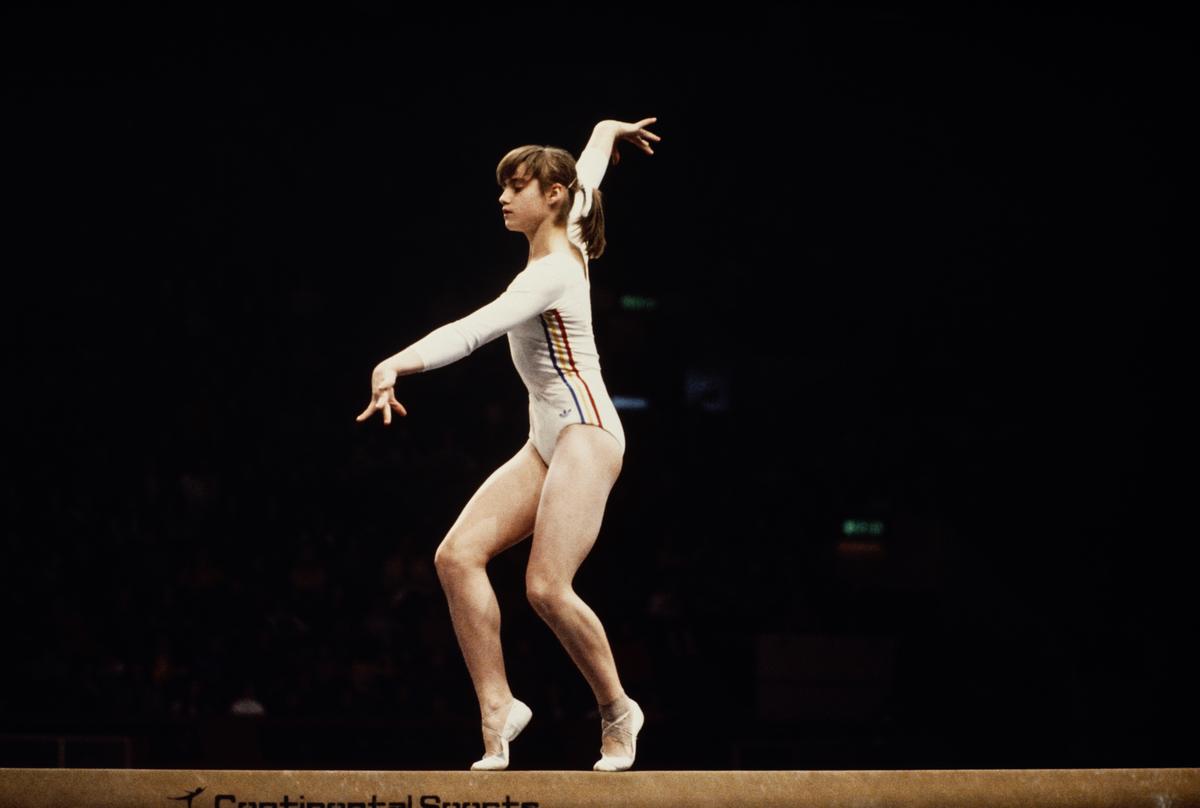
Nadia Comaneci.
| Photo Credit:
Getty Images
Nadia Comaneci.
| Photo Credit:
Getty Images
Tacked down as a long-term prospect by Belo Karolyi in 1967 when she was just six, Comaneci underwent a strict training regime under the future Romanian chief coach. She gained eligibility to compete at the senior level in 1975, making her debut in America for the first time on her maiden tour abroad, she left an indelible mark with a double backward salto dismount off the uneven bars.
Blessed with exceptional skill, balance and impressive technique, Comaneci suffered much due to an injury before she rebounded to gain two more golds at Moscow 1980, off the beam and on the floor, after she fell behind narrowly in the all-around, settling for silver, by a 0.1-point margin.
Jesse Owens
James Cleveland Owens’ family moved from Alabama to Cleveland to overcome the struggles of everyday life a little after he turned nine. Owens was already a workhorse of the poor family, picking 100 pounds of cotton every other day to help his mother put food on the table, despite being a frail child who was often sick and battling chronic bronchial congestion.
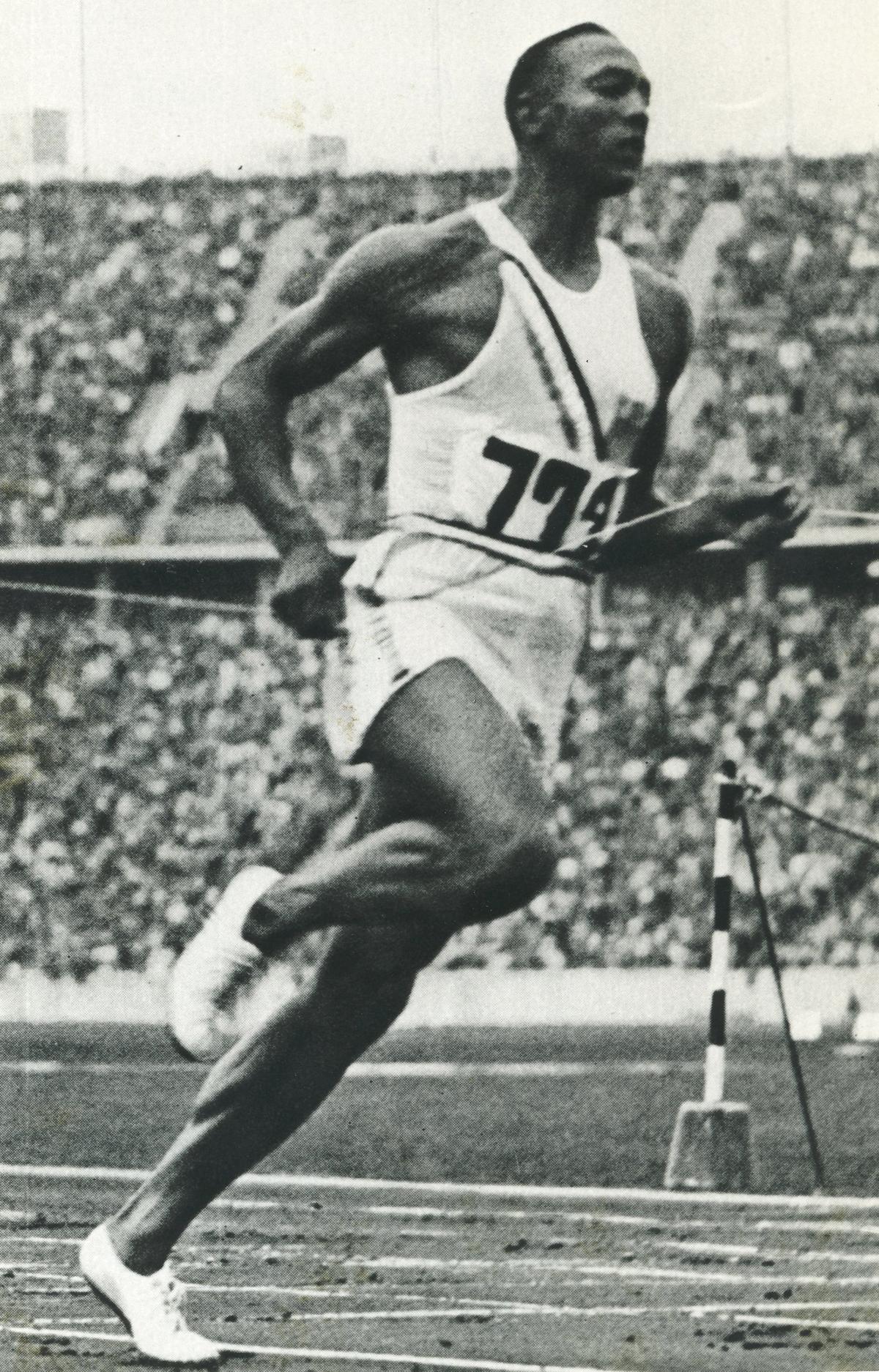
Jesse Owens.
| Photo Credit:
The Hindu Photo Library
Jesse Owens.
| Photo Credit:
The Hindu Photo Library
The shift to Cleveland was a godsend for Owens, as he was able to attend a better school, which opened a chance to try his luck in athletics. But given the social conditions of the time and the lack of regular competition across all levels, it was a tough ride to the top for the American. True, the string of scintillating performances that Owens dished out in Berlin leading to an unprecedented four gold medals has often been portrayed as a big boost to the fight against racism as they took place under the close scrutiny of Adolf Hitler.
But, for all the acclaim in the media, Owens was never met by his own country’s president, and he was given only a backdoor entry to the bus that brought in all the winners. Later, as he gave up his amateur status, he was left to race against horses and cars to eke out a living. But true champions never say die and Owens found his calling in public relations, setting up business in Chicago.
Michael Phelps
Michael Phelps has an unprecedented tally of 28 medals — 23 gold — that he owes to his mother Debbie and none else. As a child, Phelps was diagnosed with Attention Deficit Hyperactivity Disorder (ADHD), and it was the timely intervention of his mother that later gave the world the medal-making machine we know.
Michael Phelps.
| Photo Credit:
AP
Michael Phelps.
| Photo Credit:
AP
When he was just seven, with his mother cajoling him to not give up, Phelps did put in a ton of work in the pool, often swimming an astounding 80km every other week. Offsetting his disappointment in Sydney (just a fifth-place finish in the 200m butterfly), Phelps took Athens 2004 by storm, picking eight medals, six of them gold. Beijing 2008 will remain the highpoint of his career as Phelps won gold in each of his eight events.
London 2012, too, was profitable as he garnered a further six medals, four of them gold. And then, finally came Rio 2016 as Phelps re-emerged from retirement to stack up five more golds and a silver. Larisa Latynina’s benchmark of 18 medals, gained between Melbourne 1956 and Tokyo 1964, that had stood for 48 long years looked a pale shadow by the time Phelps finally bid hurrah.
Carl Lewis
It is said that the young Carl Lewis was so small and short that his sister used to jocularly call him “shorty.” He then had such a spurt in height at 15 that his parents had to put him in crutches for more than three weeks. When he moved from his hometown of Willingboro to the University of Houston, he found himself well within the trappings of a hero-in-the-making.
At 19, he was selected to represent his country at Moscow 1980 but had to stay at home as the US chose to boycott the Games. Lewis emerged as the biggest draw at Los Angeles 1984, with gold in the 100m, 200m, long jump and the 400m relay.
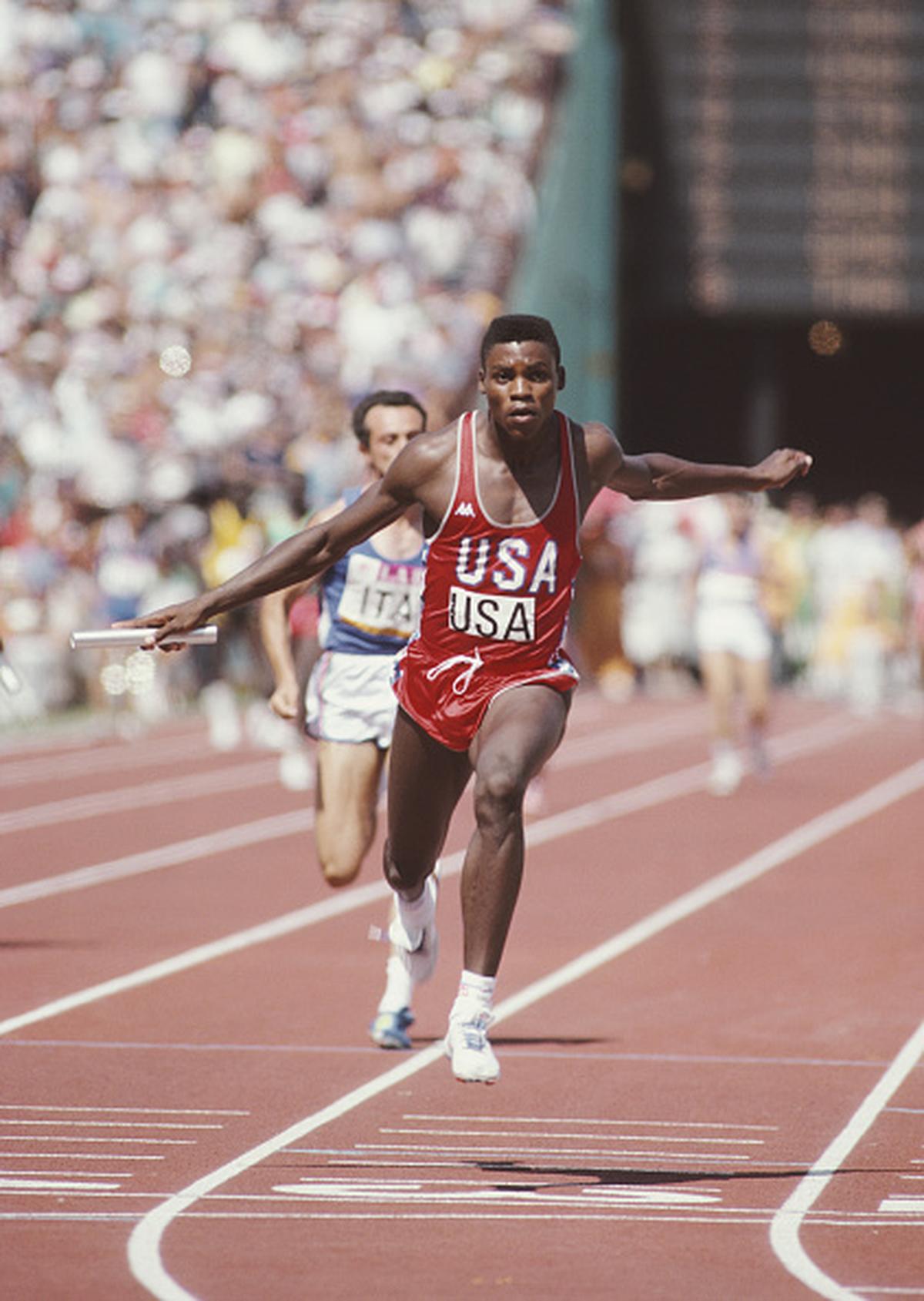
Carl Lewis.
| Photo Credit:
Getty Images
Carl Lewis.
| Photo Credit:
Getty Images
Lewis did not disappoint at Seoul 1988 as he finished with two more gold medals and a silver, earning his second consecutive crown — the first by an athlete at the Games — in the long jump, and was then given pole position in the 100m after Canadian Ben Johnson was stripped of the gold medal following a positive dope test.
Four years later in Barcelona, Lewis again won two gold medals, in the long jump and the 400m relay, before becoming the third athlete to win four on the trot at Atlanta 1996 where, at 35, he was nowhere near his best but still managed to leap to a resounding victory.
Usain Bolt
Usain Bolt first marked himself as a track prodigy at the 2002 World Junior Championships, where he won the 200m at 15 to become the youngest-ever male champion in any event. The tall and lanky youngster, standing 6 feet and 5 inches tall, defied the conventional wisdom that such sprinters are often disadvantaged at the start.
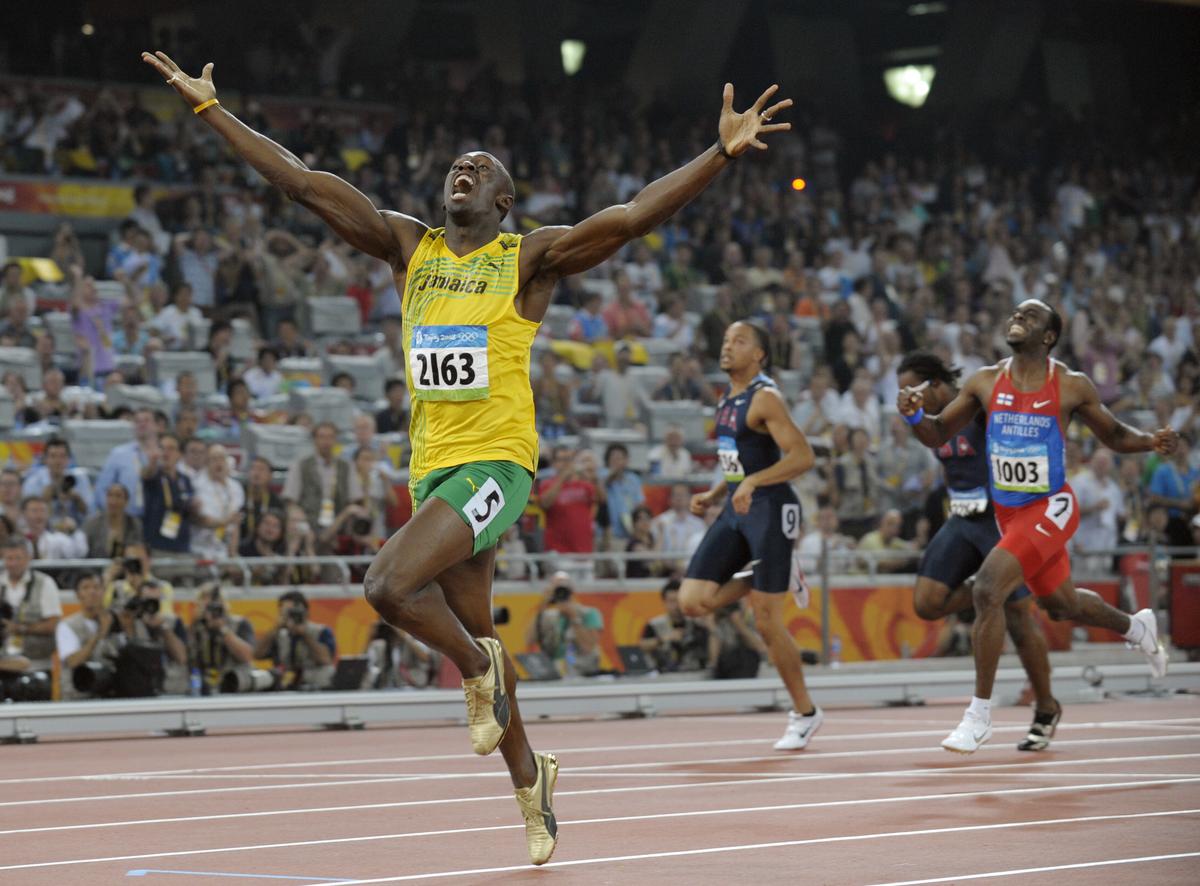
Usain Bolt.
| Photo Credit:
AP
Usain Bolt.
| Photo Credit:
AP
This was proved correct to a certain extent when the young Jamaican had a not-so memorable debut at Athens 2004 and finished last in the 2005 world championships final. It was thereafter that Bolt took to 100m and, as they say, the rest is history. Armed with the perfect concoction of attributes — speed, swagger and a never-say-die spirit — he ruled in Beijing, London and again in Rio in 2016.
Bolt struck gold not just in the 100m and 200m, but in the 4x100m relay as well (though the Beijing crown has since been stripped because of a teammate’s doping infraction). In Beijing, Bolt came through in the 100m and 200m with world records and that too by the widest margins ever recorded in the Games final of the two events.


